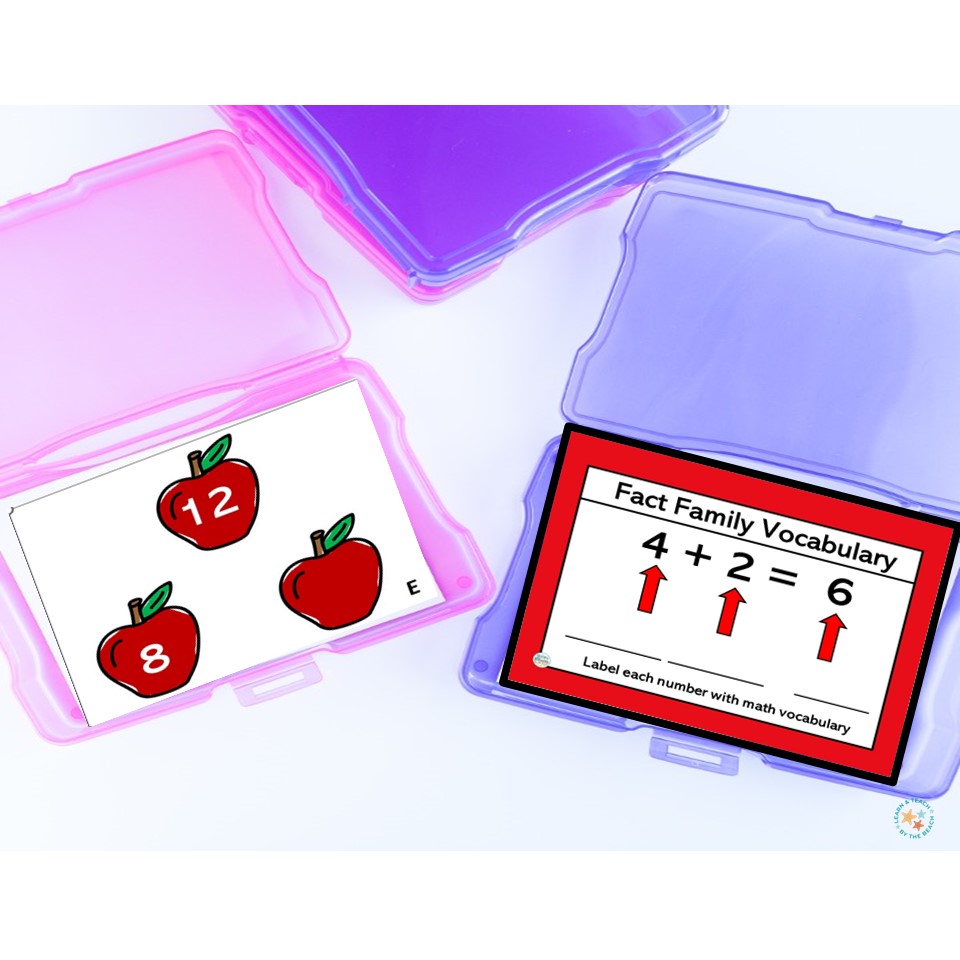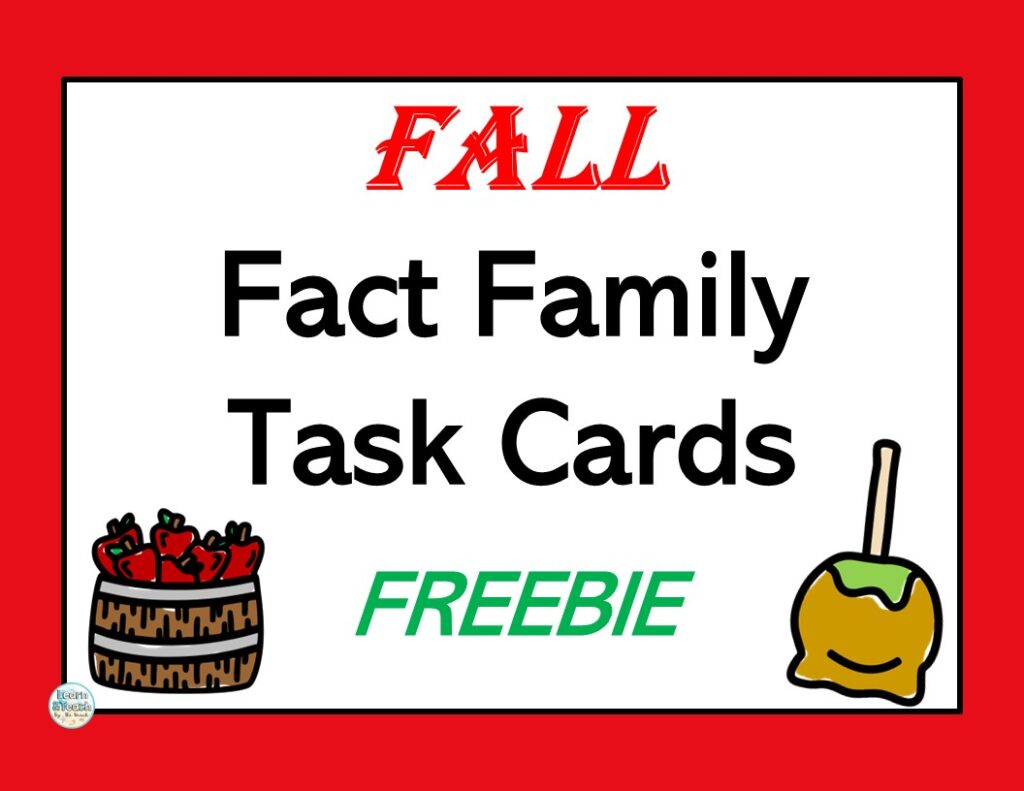Keep reading to find out the basics of fact families:
- The definition of a fact family
- Why you should teach fact families
- Engaging strategies to teach fact families
- How to provide spiral review
What is a fact family?
A fact family is a group of 4 related equations using 3 numbers.
Using addition and subtraction there are 2 addition and 2 subtraction equations that can be made with 3 numbers. For examples using the numbers 2, 3 and 5 you can make the fact family of
- 2+3 =5
- 3+2=5
- 5-3=2
- 5-2=3
Fact families can be made using multiplication and division. Using the numbers 4, 5 and 20 you can make the fact family of
- 4×5=20
- 5×4=20
- 20➗5=4
- 20➗4=5
Why teach fact families?
- To introduce students to the commutative property of addition (and multiplication). They will learn that 6+8 is the same as 8+6. This helps them build confidence so they can eventually understand that 12,345+ 24,578 will equal 24,578 + 12,345.
- To increase the idea of the inverse property of operations-addition is the opposite of subtraction and multiplication is the opposite of division. This helps them make mathematical connections which helps build number sense.
- To improve fact fluency. There are about 500 math facts to be learned when considering all four operations. So when students understand the commutative property and the application of inverse facts, this number is reduced significantly. I always tell my students that if they know 6+7=13 then actually know 3 other facts as well. (7+6=13 and 13-6=7 and 13-7=6) This also builds number sense and confidence in solving math equations.
Strategies to teach fact families
- Teach the definition of a fact family with motions to engage the brain and body. A fact family (use arms to make a circle out in front) uses 3 numbers (hold up 3 fingers) to make 2 addition equations (hold up 2 fingers and then make a plus sign)and 2 subtraction equations (hold up 2 fingers and then make a minus sign).
- Use activities to practice
- Roll and Write: Students roll 2 dice and then add them together. They use those 3 numbers to make fact family equations. Use a variety of dice to differentiate.
- Make triangles: Cut triangles from index cards and prewrite either the sums, addends or both. Pass out the triangles and have students fill in the missing numbers and then make fact family equations.
- Start with the sum: Give your students number cards and instruct them to create as many fact family equations using that number as the sum.
- Provide task cards for more independent practice–Grab some FREE fact family cards by clicking on the picture below 👇
Spiral Review
Once students understand fact families, why they’re important to learn and how to make them-keep providing review opportunities to build a solid foundation of this important math concept.
Here are two more resources to help you provide spiral review and differentiated practice with fact families.
The fall task cards provide addition and subtraction fact family practice. The fact family games and sorts has task cards, worksheets, games and sum sorts to build fact fluency.


I hope these ideas and strategies help you teach fact families to your students!
Check out more ideas for teaching number sense to 120!
Supporting you always! 💗








